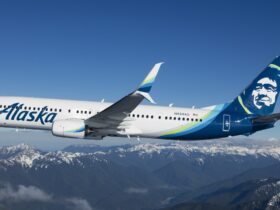The Winter Paralympics is a multi-sport event that is held every four years for athletes with physical, visual, and intellectual disabilities. It takes place soon after the Winter Olympics and is governed by the International Paralympic Committee (IPC). The first official Winter Paralympics was held in 1976 in Örnsköldsvik, Sweden, and since then it has grown in size and popularity.
History of the Winter Paralympics
The origins of the Winter Paralympics can be traced back to 1948 when Dr. Ludwig Guttmann organized the first Stoke Mandeville Games for disabled World War II veterans. These games eventually evolved into the modern-day Paralympic Games.
The first winter edition of the Paralympics was organized in 1976 after years of lobbying by wheelchair athlete and founder of the International Stoke Mandeville Games, Sir Ludwig Guttmann.
Sports
Their features a variety of sports including alpine skiing, biathlon, cross-country skiing, ice sledge hockey, snowboarding and wheelchair curling. The number of sports and events has increased over the years, with Pyeongchang 2018 featuring a record number of 80 medal events in six different sports. The events are categorized into three groups: physical impairments, visual impairments and intellectual disabilities.
Classification
Similar to the Summer Paralympics, athletes are classified based on their impairment to ensure fair competition. Each sport has its own set of rules and classification systems. For example, in alpine skiing, athletes with a range of physical or visual impairments compete together, but are divided into different classes based on the severity of their impairment. This ensures that athletes with similar abilities compete against each other.
Inclusion and Accessibility
The Winter Paralympics has played a significant role in promoting inclusion and accessibility for people with disabilities. The event provides opportunities for athletes to showcase their skills and abilities on an international stage, breaking down barriers and challenging societal stereotypes about disability. The Paralympic Movement also advocates for equal opportunities and accessibility in all areas of life for people with disabilities.
Eligibility
To be eligible to compete in the Winter Paralympics, athletes must have a permanent physical, visual or intellectual disability that significantly impacts their ability to participate in able-bodied sports. Eligibility is determined by the IPC and each athlete must undergo a classification process to ensure fair competition.
Differences from the Winter Olympics
While the Winter Paralympics may have many similarities to the Winter Olympics, there are also several key differences. For example, in alpine skiing events, visually impaired athletes are allowed to use guides while competing, and wheelchair athletes are permitted to use specially-designed equipment in events such as bobsleigh and ice hockey. Additionally, there is no distinction between male and female athletes in the Paralympic Games.
Legacy
The Winter Paralympics not only provide a platform for elite athletes with disabilities to showcase their skills, but it also promotes inclusivity and challenges societal perceptions of disability.
The Paralympic movement has inspired many individuals with disabilities to participate in sports and has also created a more accessible and inclusive environment for people with disabilities in society. It continues to break down barriers and pave the way for a more equal and accepting world.
Benefits for Host Cities
Hosting the Winter Paralympics can have many positive impacts on a city. It brings in revenue from tourism, creates jobs, and stimulates economic growth. The event also provides an opportunity for the host city to showcase their accessibility and inclusivity efforts.
Additionally, hosting the Winter Paralympics can leave a lasting legacy of improved infrastructure and facilities for people with disabilities in the host city.
Conclusion
This is a celebration of determination, courage, and athleticism. It not only provides a platform for elite athletes with disabilities to compete on an international stage but also promotes inclusivity and accessibility for people with disabilities.
As the event continues to grow in size and popularity, it will undoubtedly continue to inspire individuals with disabilities and break down societal barriers towards disability. So, it is important to support and celebrate the Winter Paralympics and all that it represents. Let’s continue to embrace diversity and promote a more inclusive world for all.
References
- International Paralympic Committee (IPC)
- The Official Website of the Paralympic Movement
- History of the Paralympic Movement
- Winter Paralympics Sports and Events
- Classification in the Paralympic Games
- Inclusion and Accessibility in the Paralympic Movement
- Eligibility for the Paralympic Games
- Differences between Winter Olympics and Winter Paralympics
- Legacy of the Winter Paralympics
- Benefits for Host Cities of the Winter Paralympics.
Read more: What is Poki Games? How to Use it?






























